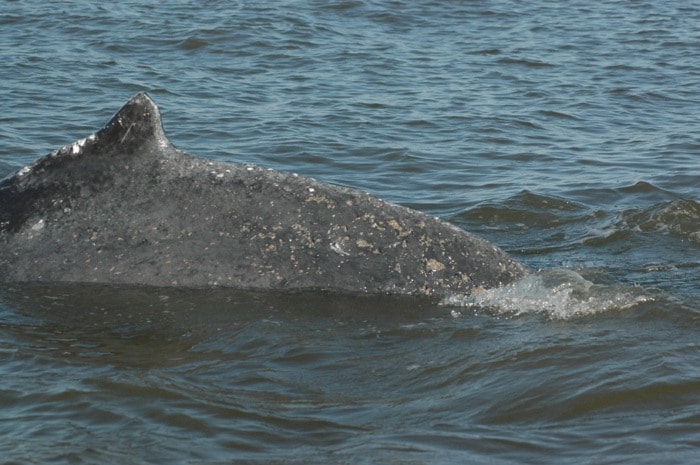Local seafarers are being asked to keep on the look out for a whale entangled in fishing gear along the Georgia and Juan de Fuca straits.
“We have an idea of how the entanglement is wrapped around the whale’s tail and it’s a fairly complicated entanglement,” said Doug Sandilands, operations director for the Cetus Research and Conservation Society. “The line has already embedded into its tail and there’s some dead tissue there, so there’s a risk of infection.”
At the centre of this whale’s tale is Canuck, a humpback who has swam onto the radar of organizations such as the B.C. Marine Mammal Response Network and the B.C. Cetacean sightings network since May.
Initial sightings of the whale in distress were reported July 31, when Canuck was spotted off of Galiano Island towing a line with float attached.
“The float that was attached to the crab trap would come to the surface even before the whale and the float would be pulled back under eventually,” Sandilands said. “The whale’s obviously tried to disentangle itself and in the process has become more entangled.”
Canuck was last sighted August 25 near Hein Bank, just south of the San Juan Islands. At that time, Cetus members spent eight hours attempting to grapple onto the line on Canuck’s tail. The efforts did not yield a positive outcome, but it provided the crew with an invaluable opportunity to assess the whale’s condition.
“The line is slowing the whale down a bit and the amount of sea lice we’re seeing on the whale is increasing each time, and that often happens when whales swim more slowly or if they have health problems,” Sandilands said.
“Whale lice isn’t like sea lice on fish, it’s a symbiotic relationship where the whale lice cleans up dead skin and infection, but there’s enough of it that there’s quite a concern at this point.”
Sandilands said Humpbacks are known for travelling up to 100 nautical miles per day. Because of the entanglement, it is estimated that Canuck could be travelling at about 75 nautical miles per day, and has been sighted as far south as Washington State, and as far north as Nanaimo.
“It’s close and it could definitely go in waters around Ladysmith and boaters would most definitely run into it,” Sandilands said. “We’re requesting people, if they do see a humpback whale anywhere in the southern Vancouver Island region, to let us know.”
Future rescue attempts will be difficult because the line is attached closely to Canuck’s tail.
“There’s not any loops hanging back behind the tail. In order to cut it, we use knives on a long pole and so we’ll have to get very close to the tail and make one or two cuts so that the line will come free,” Sandilands said.
Ideally, the crew will be able to attach buoys to the whale to slow it down.
“The whale is leery of boats,” Sandilands said. “We’ll try some new techniques if we get another chance but we’ll need to rely on the public to get the sightings of where it is.”
Sandilands said it is very important that the public do not attempt to disentangle Canuck.
“That should be very clear. People that have tried to disentangle whales themselves without knowing those techniques have ended up being injured or dying, in the past.”
To report a humpback sighting, call the B.C. Marine Mammal Response Network at 1-800-465-4336 or the BC Cetacean sightings network at 1-866-472-9663.
For more information on Canuck, visit http://cetussociety.org/2011/08/canuck_entanglement/
